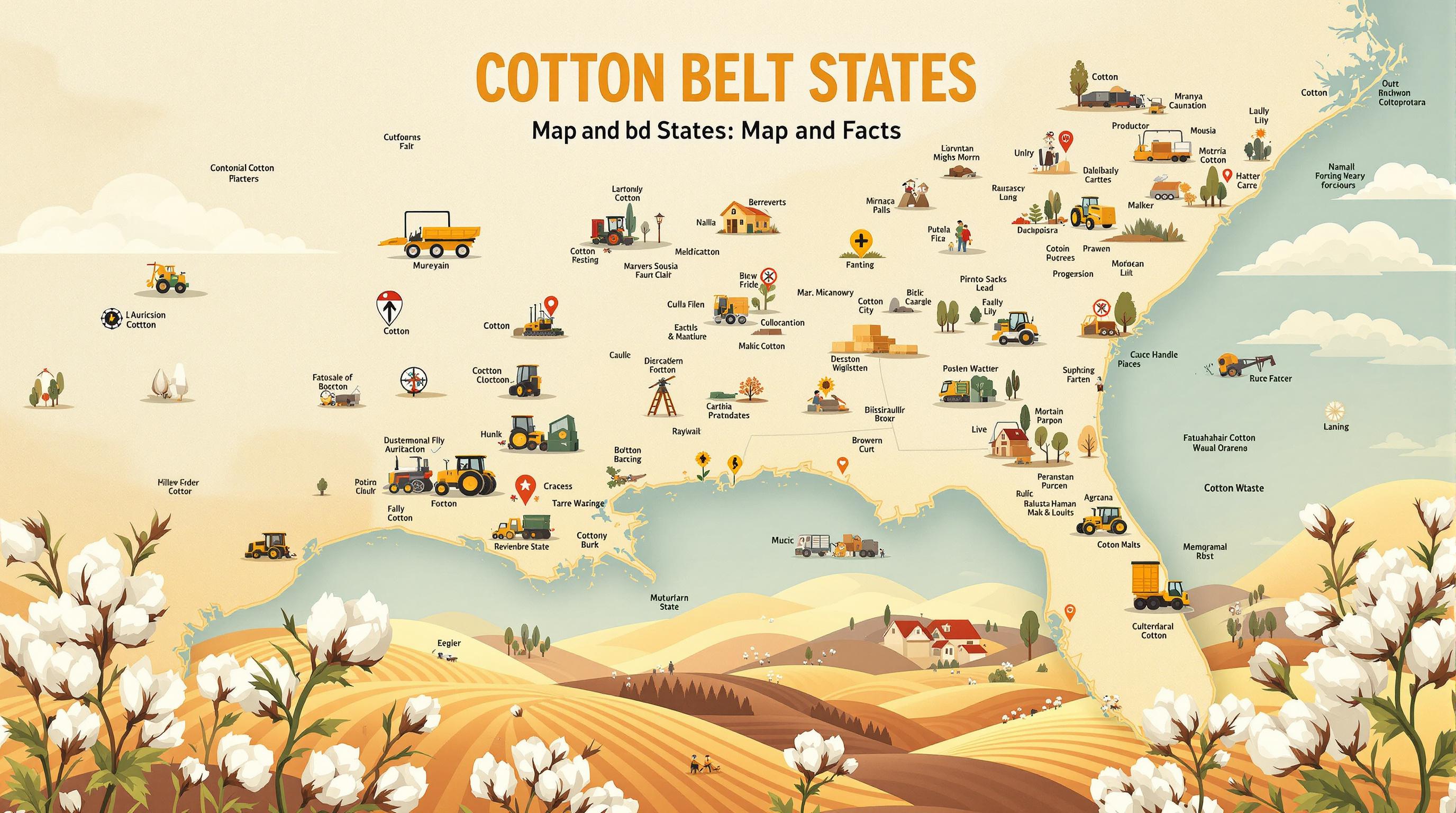Cotton thrips management is pivotal for veteran growers navigating early-season pressures that can stunt seedlings, delay squaring, and slash yields by 10-20% in untreated stands, especially in the Southeast, where overwintering on weeds amplifies infestations. For producers with decades of experience scouting variable soils—from sandy Coastal Plains to loamy Delta bottoms—effective cotton thrips management integrates resistant varieties, seed treatments, and foliar thresholds to preserve thrips-sensitive cotyledons during emergence, ensuring robust establishment for 1,200-1,500 pounds per acre potentials. Unlike piercing pests that vector viruses in humid zones, thrips like Frankliniella fusca and occidentalis thrive post-planting at 60-75°F, often flaring after mild winters or delayed planting, demanding vigilant cotton thrips management to mitigate bronzing and ragged leaves that compound drought stress. In fields exceeding thresholds of 2-3 thrips per seedling, targeted cotton thrips management not only curbs direct feeding but enhances boll retention, boosting micronaire for quality premiums. This guide dissects scouting metrics, cultural tactics, and chemical rotations backed by extension data, arming seasoned operators to counter resurgence while addressing resistance. Link to our integrated pest management in cotton farming post for complementary IPM approaches.
Understanding Thrips Species and Lifecycle in Cotton
Cotton thrips management demands insight into key species like tobacco thrips (Frankliniella fusca) and western flower thrips (Frankliniella occidentalis), which overwinter on weeds like henbit and chickweed, emerging in spring to infest cotyledons via piercing mouthparts that inject toxins, causing silvering and crinkling within 7-10 days post-emergence. In warmer belts, populations cycle every 5-7 days at 80°F, with females laying 50-100 eggs in tissue, leading to exponential buildup if unchecked—extension trials show 15-25% stand reductions in susceptible uplands.
Regional dynamics influence pressure: Humid Mid-South fosters virus transmission like tomato spotted wilt, while arid Southwest sees secondary flares from alfalfa migrations. Monitor overwintering via sticky traps pre-plant, as thresholds adjust for variety—Pima cottons tolerate less due to shallower rooting. Compounding factors include nematode synergies, weakening seedlings, and amplifying damage twofold per data.
These lifecycle nuances guide cotton thrips management, preempting peaks before the first true leaf for optimal protection.
Early Detection: Scouting and Thresholds for Thrips
Threshold-driven scouting is the bedrock of cost-effective cotton thrips management, sampling 25-50 seedlings per 20 acres weekly via beat cups or visual inspections on cotyledons and terminals. Economic thresholds: 2-3 thrips per plant pre-first leaf, dropping to 1 post-emergence in virus-prone areas—metrics that avert 10-15% vigor losses in trials.
Differentiate immatures (wingless, pale) from adults (winged, dark); count averages across fields, adjusting for predators like minute pirate bugs consuming 5-10 daily. Digital tools enhance precision: Apps log GDD (base 60°F) from planting, forecasting hatches at 150-200 units.
In mixed stands, prioritize thrips if exceeding 20% thresholds, as they exacerbate bronzing under stress. These protocols in cotton thrips management enable timely interventions, safeguarding establishment without excess inputs.
Selecting Thrips-Resistant Cotton Varieties
Varietal resistance elevates sustainable cotton thrips management, curbing feeding while bolstering early vigor. Hybrids with hypersensitive responses, like glabrous leaves, reduce oviposition by 20-30% in infested plots per extension data.
Screen trials: DP 1646 B2XF tolerates moderate pressure, yielding 10-15% edges over susceptibles. Multi-trait stacks with Bt enhance escape, but rotate to delay adaptations—efficacy wanes after 4-5 years.
Pair with virus-resistant lines in the Southeast; thresholds halve for spotted wilt risks. Seed treatments like imidacloprid fortify, adding 5-10% stand. For Pima, thrips-tolerant PHY 881 RF limits bronzing. Annual breeder refinements optimize cotton thrips management for biotype pressures.
Cultural Practices to Minimize Thrips Pressure
Cultural levers disrupt habitats in cotton thrips management, lowering baselines without reliance on sprays. Timely planting (soil >65°F) accelerates emergence, shortening vulnerability—data shows 15-20% reduced infestations versus delayed fields.
Weed host control pre-plant—henbit, mustard—slashes overwintering 30-40% via burndown. Rotations with non-hosts like corn deplete reservoirs, cutting migrations.
Density tweaks (100,000/acre) foster airflow, curbing humidity optima. Conservation tillage preserves predators, boosting suppression 10-15%. These tactics in cotton thrips management accrue resilience, trimming treatments 20-25%.
Seed Treatments: Frontline Defense Against Thrips
Systemic seed treatments anchor early cotton thrips management, delivering 14-21 days of protection during susceptible stages. Neonicotinoids like imidacloprid at 0.375 mg ai/seed knock immatures 70-80%, per trials, with higher rates for virus zones.
Combine with fungicides for seedling disease synergies; efficacy peaks in moist soils. Monitor for resistance—greenhouse bioassays detect tolerance >20%.
In organics, alternatives like spinosad offer 40-50% control. Rotate chemistries annually; integrate with scouting for refugia. These foundational inputs in cotton thrips management secure stands, enabling cultural follow-up.
Foliar Insecticides: Timing and Rotation for Control
When thresholds are surpassed, foliars provide rescue in cotton thrips management, rotating groups to preserve efficacy. Acephate (Group 1B) at 0.2 lb ai/acre delivers contact knockdown, ideal pre-first leaf with 80-90% reduction.
Spinetoram (Group 5) targets larvae post-emergence; apply at 1.5 oz/acre banded. Avoid pyrethroids—flare secondary pests like aphids.
Timing via GDD: Spray at 100-150 units if >2 thrips/plant. Tank-mix adjuvants enhance coverage in canopies. In cotton thrips management, zone applications cut costs 15-20%, pairing with bios.
Biological Controls and Beneficials in Thrips Suppression
Biocontrols augment eco-conscious cotton thrips management, harnessing predators for sustained knockdown. Orius insidiosus (pirate bugs) consume 10-20 daily; releases at 1/plant achieve 40-60% suppression in humid trials.
Lacewings target eggs; habitat strips with pollen boost retention 20%. Parasitoids like Thripobius semiluteus mummify nymphs, slashing 30-50%.
Conserve via selective sprays; moist, 70-80°F conditions maximize. For organics, these in cotton thrips management reduce chemicals 25-40%.
Integrated Thrips Management Programs
IPM synthesizes tools for resilient cotton thrips management, layering resistance with thresholds for adaptive control. Combine glabrous varieties with rotations—e.g., corn-cotton cycles deplete 50% vs. monocropping.
Scout-driven sprays; GIS zones variable rates, saving 15%. Models forecast ROI: IPM nets $50-80/acre.
Extension customizes: Southeast virus focus, Southwest migrations. Soil testing guides fertility tweaks. This in cotton thrips management sustains 1,100+ lb/acre with 30% input cuts.
Addressing Thrips Resistance and Secondary Pests
Resistance to neonics demands evolving cotton thrips management; bioassays flag >15% survival, prompting rotations.
Flares of aphids/spider mites post-pyrethroid; integrate selectives. Climate extends ranges—warmer springs add generations.
Regulatory shifts phase out organophosphates, pushing bios. RNAi targets genes via sprays, promising 50% drops. Adaptive cotton thrips management counters threats.
Economic Analysis of Thrips Management Options
ROI steers cotton thrips management: Scouting $10/acre averts 100-200 lb losses.
Resistants’ premium $20/acre, recouped via 5-10% gains. Seed treatments $15-25/acre foundational.
Foliars $20-40/acre threshold-based; IPM totals $40-70/acre, boosting nets $100-250.
| Strategy | Cost Estimate | Benefits | Yield Impact |
|---|---|---|---|
| Scouting | $10-15/acre | Precise thresholds | Informed action |
| Resistant Varieties | $20/acre premium | Reduced feeding | +5-10% |
| Cultural/Rotations | $15-25/acre | Habitat disruption | Stable |
| Biologicals | $20-40/acre | Eco-suppression | +10-15% |
| Insecticides | $20-40/acre | Rapid control | +15-20% |
Prioritize per risk.
Regional Adaptations in Cotton Thrips Management
Customize cotton thrips management: Southeast combats viruses with higher neonics; Southwest migrations via borders.
Challenges like variable efficacy are resolved with hybrids. Costs? Grants aid. Labor for scouting; apps streamline.
Solutions ensure viability.
Emerging Innovations for Thrips Control
Genomics breeds ultra-tolerant lines; CRISPR for resistance.
AI drones detect bronzing early, optimizing sprays.
Innovations advance cotton thrips management.
In summary, robust cotton thrips management fortifies early growth through vigilance. Scout thresholds, leverage resistants, rotate wisely, and adapt regionally. Monitor ROI for tweaks. Link to our cotton nematode management post for pest synergies. What's your thrips approach?


